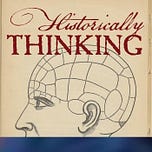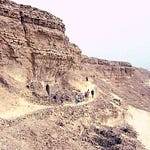Published October 13, 2022 at 4:00 AM
Introduction
The history of the ancient Near East can seem like staring down a deep, deep well of time, so deep that it gives one vertigo. It stretches back to 3,500 BC: that is, I’ll do the math for you, 5,522 years ago. In thinking about its 3,000 years of history, one begins to think not in terms of years, but in decades and centuries. Yet there were continuities amidst change, not simply within those three-plus millennia, but between then and now. For surely it would be impossible to imagine what 2022 would be like without writing, families, getting right with higher powers, kings and rulers, laws and litigation, cities and watering the garden. And all of those things can be found in the Ancient Near East.
With me to give a one-hour overview of 3,500 years is Amanda H. Podany. She is Professor Emeritus of History at California State Polytechnic University, and author most recently of Weavers, Scribes, and Kings: A New History of the Ancient Near East (Oxford University Press, 2022).
About the Guest
Amanda H. Podany is Professor Emeritus of History at California State Polytechnic University, Pomona. She has written widely on the Ancient Near East.
For Further Investigation
Amanda Podany, “What the Tablets Say”, Aeon 9 February 2023
Amanda’s list of “The best books on the lives of real people in Mesopotamia and how we know about them” (for Shepherd.com)
Previous episodes on Ancient History: Dimitri Nakassis on Mycenaean Greece (Ep. 33); Eric Cline on the First Dark Ages (Ep. 62); Joe Manning on ancient Mediterranean economies.
💬 Listen & Discuss
How much of our present is rooted in the practices of the ancient Near East? Share your thoughts in the comments—and pass the episode to someone who loves long perspectives on history.











